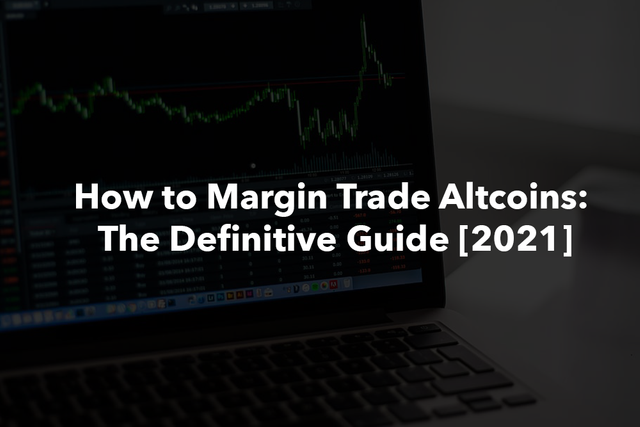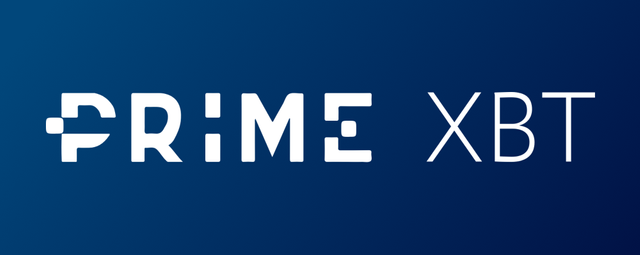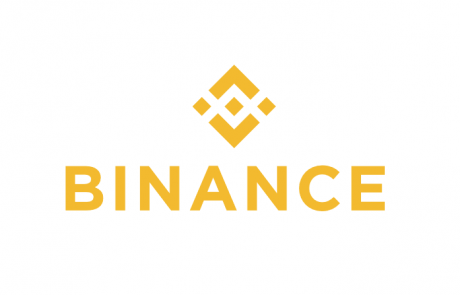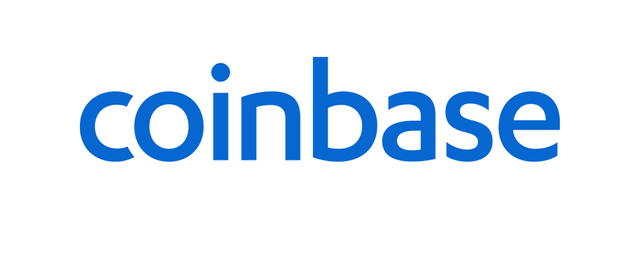How to Margin Trade Altcoins: The Definitive Guide [2021]

The popularity of margin trading in the cryptocurrency market has continued to grow over the past few years as more more cryptocurrency traders are beginning to see the clear benefits of using margin trading in order to execute leverage and shorting and to trade in a more efficient manner as a result of doing so.
Margin trading is the process of using borrowed funds in order to create trades that are typically not able to be created, but that often open up new opportunities for the generation of profit in situations such as drops in the price of an asset and also during flat trends and consolidation periods.
In particular, margin trading altcoins in the past years has grown exponentially in popularity as now it is not just Bitcoin that is being margin traded regularly by many traders but also altcoins such as ETH, EOS, and DOT are also being margin traders as well on many platforms.
In this guide were taking a deeper look at how to margin trade altcoins in 2021, starting with a look at what altcoins actually are and whether it is better to trade altcoins or Bitcoin, then moving on to look at a few of the best altcoins on the market and finishing off with some of the best trading platforms available online in 2021.
What are Altcoins?

First Up, What Actually is Cryptocurrency?
Cryptocurrencies are exchanged like real money but in digital monetary form, as a decentralized currency, they do not involve governments or banks which lets holders transact at lower fees while being easier, faster, and cheaper to send and receive compared to traditional banking services.
This revolutionary technology of the century evolved how people around the world transact and earn income, as a global currency whose processing of transactions relies on individual miners that earn fees, people from any part of the globe with the internet can mine and earn money.
Cryptocurrencies run on a blockchain whose security is provided by cryptography which is computer code that encrypts the entire network and is designed like a complex puzzle to prevent hackers from infiltrating the network, this degree of security is what makes blockchain secure and crypto holders confident in the technology.
Crypto was birthed when Bitcoin released in 2009 which spawned a wave of new coins known as altcoins to emerge, some of the largest include Litecoin, Namecoin, Cardano, EOS, and Ethereum, and with over five-thousand existing and seas of new holders entering the market each day, the market cap of all cryptos surpassed $1 trillion for the first time this year.
What are Altcoins?
Coins other than Bitcoin are referred to as altcoins as Bitcoin was among the first of its kind, alternative coins work the same way and are stored in digital wallets where store assets are sent to external wallets using private keys that encrypt and display transactions on a public ledger.
Bitcoin was one of the first cryptos to be developed but many improvements have been made to its structure since, one example of this being that some altcoins make transactions cheaper and faster while consuming less energy than Bitcoin to mine, which largely impacts its value.
Most altcoins have unique proof of concepts though few share ones that are similar, though what matters is the fact altcoins improved technology by making it easier and less expensive to transact which is one reason crypto was founded in the first place.
Altcoins were first developed to be stable coins as Bitcoin, at the time and even now, was prone to massive value fluctuations that made it difficult to attract investors of traditional stocks that were use to stable assets into crypto, today, many such altcoins exist, including Ethereum, Dash, NEM, Ripple, and Monero.
How Does Cryptocurrency Work?
Cryptocurrency works like traditional banking in the sense both use complex systems to issue currency and record transactions, and similar to online banking, online platforms can be used to manage, send, and receive cryptocurrencies, although instead of funds being issued by an institution they are delegated by an algorithm instead.
Cryptos should be thought of as a digital currency that exists on computers, and while securely transferrable to peers, does not involve middlemen, such as banks or government institutions, and is easier and more portable to use compared to traditional paper money, two of its greatest vantage points over traditional currency.
Peer-to-peer transactions are facilitated using a cryptocurrency wallet which is what holders use to store and manage their altcoins, when initiating transfers, senders use their wallet’s software to transfer coins from one account (public address) to another which on average takes only minutes to complete, though this depends on the time as network congestion, which usually occurs during peak hours when network activity is high, can slow transfer speeds to a glacial crawl.
Altcoin Trading

Is It Better to Trade Altcoins or Bitcoin?
Any coin other than Bitcoin is considered an altcoin and they are often traded by higher-risk buyers seeking larger short-term gains, such buyers turn to altcoins instead of Bitcoin as they are cheaper to buy and more likely, compared to higher-priced coins, to see double-digit, single-day gains.
Bitcoin has been around since 2009 and its uses have not evolved or changed much since, on the contrary, altcoins have different proof of concepts and ways to be used and can be more useful to holders in ways that Bitcoin is not, being cheaper and faster to transact is one benefit most altcoins have over Bitcoin.
One benefit of buying altcoins over Bitcoin is the fact many are developed with underlying proof of concepts that make them adaptable to everyday actions, this attracts groves of buyers into altcoins, especially during initial coin offerings, which can quickly hike the price and bring investors quick returns that may take weeks or months to earn trading Bitcoin, whose price at the time of writing would need to increase five-thousand dollars for an investor to generate a ten-percent return.
How Do Altcoins Perform in Bull Runs?
Altcoins are typically low-priced which naturally attracts buyers to them, when an altcoin gains publicity by going viral, which often happens right before initial coin offerings, crypto investors, in the masses, tend to shift their focus to the coin to buy it up in volumes hoping others will do the same.
Many investors purchasing altcoins at the same time is known by insiders as a bull run which is the process of buyers taking part in a coordinated buying effort to increase holdings of the coin and its value, these bull runs can result in drastic, single-day percentage gains, especially for altcoins whose value measures to the right of the decimal points.
During bull runs, altcoins usually perform well as their low prices make them attractive but also because of the hype surrounding them during bull runs, publicity spreads coin awareness and attracts buyers seeking budget-friendly investments with tremendous upside potential, altcoins are great for fund-limited buyers unable to purchase, let’s say, an entire Bitcoin whose value at the time of writing is nearing fifty-thousand dollars.
Can Altcoins Provide Better ROI?
Altcoins can provide better returns on investment considering their lower values are attractive to buyers, this causes an influx in purchase orders, and the quicker its value rises the more buyers and holders there are, this is what typically triggers a bull run and the quick-value gains altcoins are known for achieving.
Considering Bitcoin and its proof of concept has not changed since its inception, its present-day value is mostly driven by its status as being the highest-valued crypto, but this is not the case with altcoins whose proof of concepts are intended for precise uses to solve a problem, this gives them practical applications and potential for future adoption among actual users of the coin and not just investors.
With many altcoins, compared to BTC, being easier and cheaper to send between wallets, and with most having true functions that enable holders to utilize technology or software for which the coin was purposed to be used, the potential for altcoin values to rise often succeeds Bitcoin’s, whose technology since release has had no significant upgrades.
What are Some of the Best Altcoins?

Covesting
The COV token from Covesting has been one of the top performing altcoins over the past 12 months and is as it is increased by more than 1000% during this period of time and has led much of the cryptocurrency market for the gains that it is made throughout the earliest parts of this most recent crypto bull run.
The COV token is used to unlock a range of different utilities on the Covesting module on PrimeXBT, with some of the utilities that it unlocks leading to the generation of greater levels of revenue and others unlocking ways to cut the cost of using the Covesting module.
Covesting is a project that has brought crypto copy trading to the market for the first time, and as a result of satisfying the huge unmet demand for copy trading in the crypto market Covesting has grown steadily over the past three or four years and today is positioned for the COV token to see significant gains throughout 2021.
Ethereum
Ethereum is among the most popular of altcoins and is a decentralized software platform using Smart Contracts and Decentralized Applications (DApps) in order to avoid fraud, downtime, interference, and control from third-party outsiders and offers a suite of decentralized financial products accessible to anyone in the world.
Ethereum is accessible to people of all faith, ethnicities, and nationality which makes this altcoin alluring to those residing in countries lacking state infrastructure as people in these regions using ETH can gain access to insurance, loans, bank accounts, and other financial products.
Ethereum-based applications run on a platform-specific cryptographic token known as Ether which acts as a vehicle for moving Ethereum on the platform, it is useful to developers wanting to develop and run applications on its network and by investors wanting to use Ethereum to purchase other altcoins.
Ethereum launched in 2015 and is currently positioned as the second-largest altcoin having a market cap that is 19% of Bitcoin's, despite the large margin it is a remarkable achievement that was impartially achieved by its 2014 pre-sale launch event that ushered in the age of initial coin offerings, or ICO as it is better known.
Ethereum is one of the best altcoins to purchase, especially in 2021, as its consensus algorithm is expected to transition from the proof-of-work to proof-of-stake model, this will allow ETH's network to run independently which will allow transaction speeds to improve due to less energy being consumed by the network.
This new model will allow network participants to stake their holdings which helps to secure the network and the transactions it processes, this also means contributors to the network will earn interest that is paid in Ethereum which will not only increase the number of buyers and holders but its value too.
DogeCoin
DogeCoin is an altcoin that first launched as a joke but in its first five days of launch was among the top-ten most traded coins with nearly half of buyers coming from North America and the other half from Europe, since then, its value rose to the point that a $100 investment five years ago would now be worth over $16,000.
It is known as the original meme coin and while not as easy as Bitcoin or Ethereum to purchase is available on many crypto trading platforms, such as Coinbase, Binance, and Kraken, and likely lead see its value increase over time due to it becoming increasingly easier for investors to access and buy.
Dogecoin is an altcoin based on LuckyCoin, which is based on Litecoin, and was initially developed to be an approachable alternative to other cryptocurrencies, namely Bitcoin and Litecoin, as such, there are no groundbreaking features that distinct Dogecoin apart from other altcoins and cryptos but is one to keep on the radar of possible buys.
Dogecoin had no updates since 2015 though had sporadic gains by piggybacking off upgrades made to the Litecoin code, however, despite no evolutions to its technology, its value slowly but steadily rose over time due to the optimistic community surrounding it and the speculation of growth its holders actively publicize in crypto forums and communities across the net.
What is Margin Trading?

Margin Trading Basics
Margin trading altcoins increases investment risk but the potential for higher profits too, this trading style brings higher losses or profits and is best for investors that can afford and stomach the emotional ride of larger swings, which like traditional stocks, can go in either direction.
In contrast to normal trades, margin trading allows crypto investors to increase holdings and positions by leveraging buying power that is borrowed from third-party lenders known as brokers or margin lenders, margin trades are riskier in nature as they amplify profits and losses and as such are best for seasoned investors with experience.
Margin trading altcoins is a viable option for those foreseeing a rise in value for a given crypto, these trades are also done by those not wanting to sell or convert current holdings into another coin or for investors wanting to preserve cash for future trades in the event borrowing limits are reached or tied up in holdings.
While margin trading rules and variations can differ from one crypto margin trading platform to another, most follow the same principles and work the same way, despite varying requirements, borrowers committing a pre-defined percentage of the total order value remains constant.
What is Leverage?
When leveraging third-party funds to margin trade crypto, applicants fund a percentage of the position which constitutes the margin and a level comfortable to the investor should be chosen, if a $20,000 margin trade with a 10x/10:1 leverage is made the trader would need to fund ten-percent of the order amount, in this example that equates to $2,000.
Crypto market leverage ratios typically range from 2x to 100x or 2:1 and 100:1 respectively, the more leverage used the closer liquidations rates are to the entry price, which leaves very little room for error, as such, it is essential to know that if a margin-traded coin moves against the position, and if its value reaches a pre-defined threshold, the exchange from which funds were borrowed will force-sell the shares and keep the traders invested amount.
Inexperienced crypto traders can lose large portions of their investment by overestimating the impact of high-leverage trades in volatile markets and as such should study and learn the nature of margin trading before pursuing it as an investment strategy as while it raises the potential of greater profits heightens the risk of larger losses too.
What is Shorting?
Margin trading cryptocurrencies has all to do with the opening of short and long positions, going long is when an investor believes the value will go up and if correct will profit from it, when shorting assets, in this case, altcoins, the investor is betting on the price to decline, and if right will profit on the spread.
If the value of the shorted coin falls, even by half, traders earn no more than fifty percent, but if it doubles in value, all funds are lost, as such, shorting altcoins should be done with caution by experienced traders as the rapidity of changing trends in the crypto market has thrown off and caused losses for even the most experienced of traders.
For example, if John believes Ethereum will drop within thirty days, he may borrow ten ETH from the exchange, which he will sell, but with the agreement to return the ten ETH to them within thirty days, if his forecast is accurate and the price drops, John can repurchase the ETH at a reduced rate to return them to the exchange and will keep the difference as profit.
Shorting is best for experienced traders that understand market trends and volatility as losses are only realized once locked in, if ETH is shorted and its value rises 50%, the investor will have to rebuy the ETH at a higher price to reimburse the exchange, this results in a loss but also leaves the trader with no assets to show for the additional funds needed to cover the shares owed to the exchange.
What are the Benefits of Margin Trading?
.jpeg)
Shorting - Profit From Drops in Price
While risky, shorting assets, whether it be stocks or crypto, can be profitable if asset values drop as this is what investors foresee and bet on when opening short positions, if Ripple is shorted at thirty cents and it drops to twenty, the trader earns ten cents per coin.
Shorting crypto has become popular in recent times due to bull runs that cause can altcoin values to soar overnight, however, most price run-ups are driven by hype and not changes to the technology, structure, or proof of concept of the coin itself, as such, one-day, double-digit gains usually retract to pre-hype values once lower-price holders liquidate shares.
This is one of many trends analyzed to profitably short altcoins though the concept of short selling, or ‘going short’ as referred to by insiders, is what matters most, simply put, it is a way to profit from value-declining asset, when shorting altcoins, they are borrowed from an exchange, sold, and if all goes as expected, repurchased at a lower rate and returned to the lender, the difference between the sell and buy price is the profit.
Bearing in mind the risks of short selling is imperative as there is no limit to the amount of money that can be lost, compared to traditional trades where more than the value of the asset at the time of purchase cannot be lost, since its price cannot fall below $0, short-sellers can, theoretically, lose infinite amounts of money as the value could technically rise forever.
Assets shorted at $500 that increase to $2,000 would net the trader a $1,500 loss, and since market demand impacts the value of assets, prices, theoretically, can infinitely grow, and the more it does the greater short-seller losses become.
Leverage - Amplify the Profit from Successful Trades
Maximizing profits is the goal of all traders though requires an understanding of available trade types and the times they are best used, ‘leverage’ and ‘margin’ are similar in that both require traders to borrow money though are unique in that leverage refers to taking on debt while margin is borrowed money secured with up-front funds for an amount pre-defined by the lending exchange.
Spot trading is a popular way for investors to enter the crypto market and a way to maximize trading profits, let us assume you see a trading opportunity for which you do not have the funds to cover, by leveraging a margin trade, you can use borrowed funds to open a potentially profitable position that you otherwise would have been unable to do, this not only boosts trader buying power but profits and returns as well.
Adding to that, with margin trading, market swings are amplified even more and if in the right direction can be very profitable, this not only broadens the investors trading horizon and allow more trading opportunities/strategies to be explored but lets traders leverage short- and long-term gains on other cryptos whose earning potential may be even greater.
Leverage - Ability to Trade Flat Trends
In the crypto market, the term ‘flat’ refers to coin values that neither rise nor decline, coins with flat trends have prices that change very little, some even call them ‘stable coins’, such altcoins may deter buyer interest but can be profitable when strategically bought and sold.
Profiting from altcoin flat trends is achievable when small changes in price occur as leverage can be used from these minor oscillations to earn and amplify profits, making this normally risky trade a securer one to make, some traders profit from flat trends using arbitrage too, this is the process of leveraging price disparities in the market, if ETH is $1,700 on CoinBase but $1,780 on Binance, it could be purchased on one exchange and then transferred and sold on the other for an $80 profit.
As a market-neutral strategy, this can be done whether prices increase or decline but risks are involved, price differentials can disappear and exchange fees can quickly add up, either of these two scenarios can dissolve profits and cause negative returns, taking into account exchange fees before executing trades, no matter the type of trade made, is imperative to maximizing leveraged positions.
What are the Best Crypto Margin Trading Platforms for Altcoins?
PrimeXBT

PrimeXBT is the world's leading multi-asset margin trading platform and one of the most popular places online to margin trade cryptocurrencies, with PrimeXBT being the first platform to popularize margin trading in the cryptocurrency space and listing one of the widest range of assets available for margin trading.
Traders able to margin trade cryptocurrencies with up to 100X leverage such as BTC, ETH, LTC, and EOS, as well as being able to access up to 500X leverage on a range of traditional assets like stock indices such as S&P500 and FTSE100, forex pairs such USD/EUR and AUD/CAD, and commodities such as gold and oil.
PrimeXBT provides a range of powerful margin trading tools and as such as high leverage, a range of different order types including stop losses and OCO (“one-cancels-the-other”) orders, and advanced charting technologies in order to set up and execute margin trades effectively.
As well as this, PrimeXBT charges the lowest fees of any major crypto trading platform in the market with a low flat rate of just 0.05% being applied to all trades, irrespective of the asset being traded or the size of the trade.
Binance

Binance is relatively new to the altcoin scene but quickly popularized among margin-altcoin traders, in fact, at the time of writing, it is listed as the number-one altcoin trading platform on CoinMarketCap and has a growing user base supported by an ambitious and friendly support team.
With over two-hundred tradable altcoins and the ability to place limit buy/sell orders, the only thing easier than margin trading altcoins is the process of getting set up, as a Binance account holder, margin trading is as simple as logging in, clicking your profile, and navigating to the ‘Margin’ link located in the account dashboard under ‘Balance Details’.
Margin trading altcoins is a seamless process as margin accounts can be funded directly from Binance Wallets, during which, the desired coin is chosen and added to the portfolio upon purchase, at which point, coins can be used as collateral to borrow funds following a fixed 5:1 (5x) rate, meaning four Ethereum can be borrowed for each one that is staked, interest rates are updated each hour and can be viewed on their Margin Fee page.
Coinbase

Exciting news to CoinBase users was the announcement that margin trading was returning to the platform after being removed nearly four months ago, as of February 12th, 2021, CoinBase Pro users in twenty-three states across the U.S. can access up to three-times leverage on USD-quoted books.
While having less altcoins than Binance to choose from, Coinbase is a regulated and trusted platform now offering margin trading to individual investors that live in FL, TX, IL, NJ, VA, GA, AR, AK, OR, CT, NH, MA, NE, NC, OK, CO, KS, ME, SC, UT, WI, WY, or WV, the number of eligible states broaden from 23 to 43 for institutional investors with the full list of eligible regions available.
Designed for the advanced trader, margin trading on Coinbase gives users the ability to leverage one of the deepest and most trusted pools of crypto liquidity around, having an ambitious team and a stellar compliance track record, users trade with peace of mind and confidence knowing they can execute even the most sophisticated of trading strategies, plus, unlike other exchanges, like Binance, Coinbase has never been hacked or infiltrated.
In Conclusion
Margin trading altcoins is a popular way of generating an income in the cryptocurrency market in 2021 and far from the origins of the crypto industry when margin trading was quite uncommon, today margin trading makes up a majority of all of the trades are executed in the cryptocurrency space, with the majority of those margin trades being done so on altcoins.
There are a number of platforms that provide altcoin margin trading online, however we've listed a few of the best platforms with excellent margin trading tools and features and the ability to cut costs and risk.
You like to learn more about the platforms we recommend for crypto altcoin margin trading, check out PrimeXBT, Binance, and Coinbase.